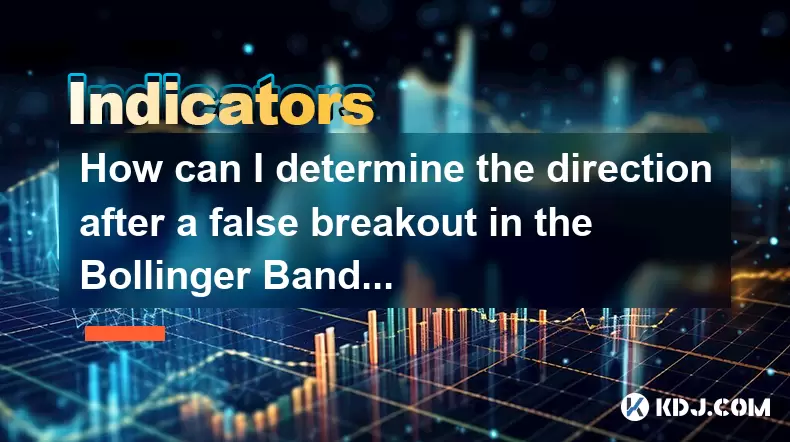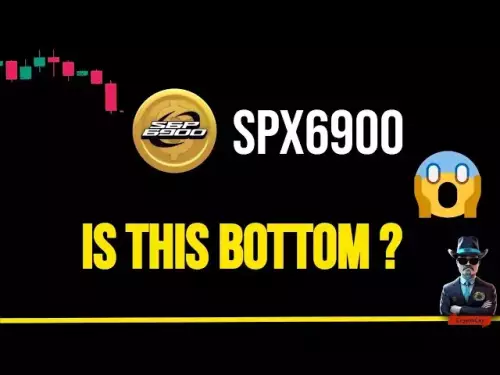-
 Bitcoin
Bitcoin $112600
-2.20% -
 Ethereum
Ethereum $4774
0.35% -
 XRP
XRP $3.032
0.12% -
 Tether USDt
Tether USDt $1.000
0.08% -
 BNB
BNB $867.7
-1.75% -
 Solana
Solana $204.9
0.39% -
 USDC
USDC $1.000
0.01% -
 Dogecoin
Dogecoin $0.2339
-1.38% -
 TRON
TRON $0.3645
0.88% -
 Cardano
Cardano $0.9223
1.03% -
 Chainlink
Chainlink $25.91
-0.85% -
 Hyperliquid
Hyperliquid $45.54
1.73% -
 Sui
Sui $3.698
-0.53% -
 Stellar
Stellar $0.4117
-0.92% -
 Ethena USDe
Ethena USDe $1.001
0.02% -
 Bitcoin Cash
Bitcoin Cash $590.7
0.30% -
 Avalanche
Avalanche $25.74
-0.77% -
 Hedera
Hedera $0.2534
0.31% -
 Litecoin
Litecoin $120.7
-0.20% -
 UNUS SED LEO
UNUS SED LEO $9.580
-0.17% -
 Toncoin
Toncoin $3.331
-1.54% -
 Shiba Inu
Shiba Inu $0.00001303
-2.00% -
 Uniswap
Uniswap $11.09
-2.63% -
 Polkadot
Polkadot $4.131
-2.27% -
 Dai
Dai $1.000
0.01% -
 Aave
Aave $352.2
-0.77% -
 Bitget Token
Bitget Token $4.678
-0.53% -
 Cronos
Cronos $0.1578
0.84% -
 Monero
Monero $279.7
5.32% -
 Ethena
Ethena $0.7000
-6.27%
How can I determine the direction after a false breakout in the Bollinger Bands?
A false breakout occurs when price briefly exits a Bollinger Band but reverses quickly, often signaling a reversal—especially with low volume and bearish candlestick patterns.
Aug 10, 2025 at 06:07 pm

Understanding False Breakouts in Bollinger Bands
A false breakout occurs when the price of a cryptocurrency temporarily moves beyond the upper or lower Bollinger Band but fails to sustain the move, quickly reversing back into the band. This phenomenon is common in volatile markets like crypto, where sharp price swings can trigger emotional trading decisions. The Bollinger Bands, composed of a middle Simple Moving Average (SMA) and two standard deviation bands above and below it, are designed to reflect volatility. When the bands contract, it often signals a period of low volatility, setting the stage for a breakout—real or false.
Traders must distinguish between a genuine breakout and a false one. A genuine breakout is confirmed when the price sustains movement outside the band with strong volume and momentum. In contrast, a false breakout lacks follow-through. Recognizing this early helps avoid entering a trade based on misleading signals. The key lies in analyzing price action after the breakout attempt, particularly how the price reacts upon re-entering the bands.
Identifying Reversal Patterns After a False Breakout
After a false breakout, the price often retraces sharply, indicating a potential reversal. Traders should look for specific candlestick patterns that confirm the reversal. These include pin bars, engulfing patterns, and doji candles near the band boundaries. For instance, if the price breaks above the upper band and forms a bearish engulfing candle immediately after, it suggests strong rejection and a likely downward move.
Volume analysis plays a crucial role. A false breakout typically occurs on low volume, while the reversal back into the bands is accompanied by increasing volume, showing institutional or algorithmic participation. Monitoring on-chain volume data or exchange-specific volume indicators can provide deeper insight. Additionally, divergence between price and momentum indicators like RSI or MACD strengthens the reversal signal. If the price makes a new high outside the upper band but RSI fails to surpass its previous high, it signals weakening momentum.
Using Confluence with Other Indicators
Relying solely on Bollinger Bands can lead to misinterpretation. Combining them with other technical tools increases accuracy. The Relative Strength Index (RSI) is particularly effective. When a false breakout occurs in overbought territory (RSI > 70), the likelihood of a downward reversal increases. Similarly, a false breakout below the lower band in oversold conditions (RSI < 30) often precedes a bounce.
Another powerful tool is the Moving Average Convergence Divergence (MACD). Watch for MACD crossovers or histogram contraction after the breakout. A bearish crossover after an upper band breakout supports a downward direction. Support and resistance levels from previous price action also add confluence. If the false breakout happens near a known resistance zone, the probability of a reversal rises significantly.
- Enable RSI on your chart and set the period to 14
- Add MACD with default settings (12, 26, 9)
- Overlay horizontal support/resistance lines from recent swing highs/lows
- Observe alignment between Bollinger Band breakout failure and these levels
Applying Price Action and Structure Analysis
Price structure reveals the market’s intent. After a false breakout, examine the higher lows or lower highs to determine direction. If the price breaks above the upper band but retreats to form a lower high inside the bands, it indicates bearish structure. Conversely, a failed breakdown below the lower band that results in a higher low suggests bullish reversal potential.
Use trendlines to connect recent swing points. A break of an ascending trendline after a false breakout above the upper band can signal a shift in momentum. Order block analysis from the ICT (Inner Circle Trader) methodology is also useful. Identify if the breakout occurred from a liquidity zone—often, false breakouts are used to trigger stop losses before reversing.
- Mark recent swing highs and lows on the chart
- Draw trendlines connecting at least two points
- Identify if the breakout candle closed within or outside the band
- Check for wick rejections—long upper wicks above the band indicate selling pressure
Executing Trades Based on Post-Failure Direction
Once a false breakout is confirmed and the reversal signal appears, entry timing becomes critical. Wait for the price to close back inside the Bollinger Band before acting. For a failed breakout above the upper band, consider a short entry on the close of the reversal candle. Place a stop-loss just above the high of the breakout candle to manage risk.
Take-profit levels can be set using the middle SMA (20-period) or the opposite band. For example, after a false breakout above the upper band, the first target could be the middle line, and the second at the lower band. Adjust position size based on the distance to stop-loss to maintain a favorable risk-reward ratio (ideally 1:2 or better).
- Wait for a confirmed close inside the band
- Enter on the next candle’s open or use a limit order at key levels
- Set stop-loss beyond the extreme of the breakout candle
- Use trailing stops if the reversal gains momentum
Frequently Asked Questions
What time frame is best for spotting false breakouts in Bollinger Bands?
The 1-hour and 4-hour charts offer a balanced view, minimizing noise while capturing meaningful price action. Lower time frames like 5-minute are prone to fakeouts, while daily charts may delay signal confirmation.
Can Bollinger Bands be adjusted for different cryptocurrencies?
Yes. While the default settings (20-period SMA, 2 standard deviations) work for most assets, highly volatile coins like meme tokens may benefit from widening the bands (e.g., 2.5 standard deviations) to reduce false signals.
How do I differentiate between a squeeze and a false breakout?
A squeeze occurs when bands contract tightly, indicating low volatility before a real breakout. A false breakout happens after expansion, where price exits the band but quickly returns. Squeezes precede volatility; false breakouts exploit it.
Is volume essential in confirming a false breakout?
Absolutely. Low volume during the breakout and rising volume during the reversal strongly support a false breakout. Use volume profile tools to compare activity at key price levels.
Disclaimer:info@kdj.com
The information provided is not trading advice. kdj.com does not assume any responsibility for any investments made based on the information provided in this article. Cryptocurrencies are highly volatile and it is highly recommended that you invest with caution after thorough research!
If you believe that the content used on this website infringes your copyright, please contact us immediately (info@kdj.com) and we will delete it promptly.
- Rare Find: The 1-Cent Coin Worth €6,000!
- 2025-08-25 02:45:28
- Hacktivism, Tokenization, and the Decentralized Future: A New Yorker's Take
- 2025-08-25 02:45:28
- UNI Price Gears Up for New Cycle: Analyst Outlook Bullish
- 2025-08-25 02:50:11
- BlockchainFX, Polkadot, Stellar: Unveiling 2025's Crypto Opportunities
- 2025-08-25 03:25:27
- Pi Coin Price Patterns: Decoding the Hype and Reality
- 2025-08-25 03:30:12
- Pepe Crypto: Price Predictions and Long-Term Investment Potential - A NYC Perspective
- 2025-08-25 03:05:12
Related knowledge

What does it mean when the +DI and -DI cross frequently in the DMI indicator but the ADX is flattening?
Aug 11,2025 at 03:15am
Understanding the DMI Indicator ComponentsThe Directional Movement Index (DMI) is a technical analysis tool composed of three lines: the +DI (Positive...

What does the sudden appearance of a "dark cloud cover" candlestick pattern during an uptrend indicate?
Aug 13,2025 at 11:35am
Understanding the 'Dark Cloud Cover' Candlestick PatternThe dark cloud cover is a bearish reversal pattern in technical analysis that typically appear...

What does it mean when the moving average, MACD, and RSI all send buy signals simultaneously?
Aug 11,2025 at 01:42pm
Understanding the Convergence of Technical IndicatorsWhen the moving average, MACD, and RSI all generate buy signals at the same time, traders interpr...

What does it mean when both the KDJ indicator and the RSI show overbought signals simultaneously?
Aug 13,2025 at 11:35am
Understanding the KDJ Indicator in Cryptocurrency TradingThe KDJ indicator is a momentum oscillator derived from the Stochastic Oscillator, widely use...

What does it mean when the price is trading above the SAR indicator but the red dots are densely packed?
Aug 09,2025 at 11:49pm
Understanding the SAR Indicator and Its Visual SignalsThe SAR (Parabolic Stop and Reverse) indicator is a technical analysis tool used primarily to de...

What does it mean when the candlestick chart forms a "Morning Star" but trading volume is sluggish?
Aug 12,2025 at 06:28pm
Understanding the Morning Star Candlestick PatternThe Morning Star is a three-candle bullish reversal pattern commonly observed in cryptocurrency pric...

What does it mean when the +DI and -DI cross frequently in the DMI indicator but the ADX is flattening?
Aug 11,2025 at 03:15am
Understanding the DMI Indicator ComponentsThe Directional Movement Index (DMI) is a technical analysis tool composed of three lines: the +DI (Positive...

What does the sudden appearance of a "dark cloud cover" candlestick pattern during an uptrend indicate?
Aug 13,2025 at 11:35am
Understanding the 'Dark Cloud Cover' Candlestick PatternThe dark cloud cover is a bearish reversal pattern in technical analysis that typically appear...

What does it mean when the moving average, MACD, and RSI all send buy signals simultaneously?
Aug 11,2025 at 01:42pm
Understanding the Convergence of Technical IndicatorsWhen the moving average, MACD, and RSI all generate buy signals at the same time, traders interpr...

What does it mean when both the KDJ indicator and the RSI show overbought signals simultaneously?
Aug 13,2025 at 11:35am
Understanding the KDJ Indicator in Cryptocurrency TradingThe KDJ indicator is a momentum oscillator derived from the Stochastic Oscillator, widely use...

What does it mean when the price is trading above the SAR indicator but the red dots are densely packed?
Aug 09,2025 at 11:49pm
Understanding the SAR Indicator and Its Visual SignalsThe SAR (Parabolic Stop and Reverse) indicator is a technical analysis tool used primarily to de...

What does it mean when the candlestick chart forms a "Morning Star" but trading volume is sluggish?
Aug 12,2025 at 06:28pm
Understanding the Morning Star Candlestick PatternThe Morning Star is a three-candle bullish reversal pattern commonly observed in cryptocurrency pric...
See all articles

























































































